Media Annotation as Service
Media Data Labeling
Empower your machine learning models with pixel-perfect data annotation. Our platform supports a range of annotation tools, including bounding boxes, object detection and recognition, and instance segmentation. Label images and videos with ease and accuracy, and take control of your training date for superior results.
Pixel-wise Boundaries
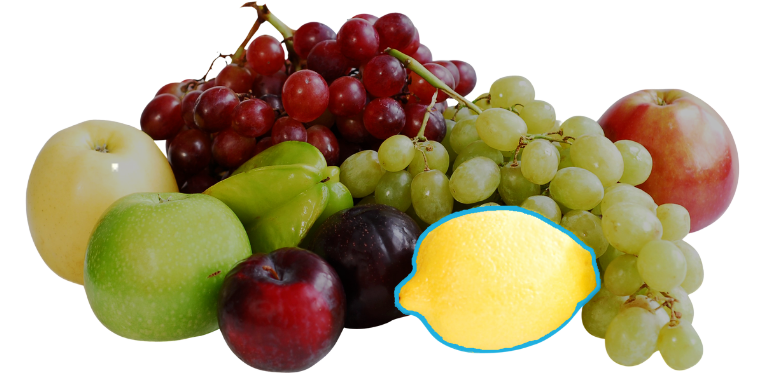
Benefits of pixel-wise boundaries for data labeling:
- More precise labeling: Pixel-wise labeling enables labeling at the individual pixel level, providing greater accuracy and detail compared to other methods such as bounding boxes or polygons.
- Ability to label complex shapes: Pixel-wise labeling allows for more complex and
irregular shapes to be labeled accurately, making it useful for tasks such as semantic segmentation and instance segmentation. - Improved training accuracy: By providing more precise and detailed labels, pixel-wise boundaries can lead to improved training accuracy for computer vision models.
Use cases for pixel-wise boundaries in data labeling:
- Semantic segmentation: Pixel-wise labeling is commonly used for semantic segmentation tasks where the goal is to label each pixel in an image with the corresponding object or class.
- Instance segmentation: Similar to semantic segmentation, instance segmentation
requires labeling each pixel in an image with the corresponding object, but it also
requires distinguishing between different instances of the same object. - Medical imaging: In medical imaging, pixel-wise labeling is used to identify specific
structures and regions of interest in images, such as tumors or lesions.
Object Localization Boxes
Benefits of object localization boxes for data labeling:
- Accurate & efficient object detection: Localization boxes precisely identify the location of an object in an image, allowing machine learning models to accurately detect and classify objects.
- Consistency: Object localization boxes provide a standardized way of annotating objects, ensuring consistency across different labeled images.
- Versatility & Scalability: Localization boxes can be used to annotate a wide range of objects, from simple geometric shapes to more complex objects with irregular shapes. Localization boxes also allow for easy scaling of data labeling tasks, making it possible to annotate large datasets quickly and efficiently.
Use cases for object localization boxes in data labeling:
- Autonomous driving: Object localization boxes are commonly used in data labeling for autonomous driving, where they are used to identify and track other vehicles, pedestrians, and obstacles in real-time. This information is crucial for developing accurate perception models that enable self-driving vehicles to navigate safely and efficiently.
- E-commerce product recognition: Localization boxes can be used to label images of products in e-commerce settings, allowing machine learning models to recognize and classify products accurately. This enables retailers to automate the process of product tagging, improving the efficiency of their e-commerce operations.
- Medical image analysis: Localization boxes can also be used in medical image analysis, where they are used to identify and highlight areas of interest, such as tumors or lesions. This information is crucial for developing accurate diagnostic models and treatment plans, improving the quality of care for patients.
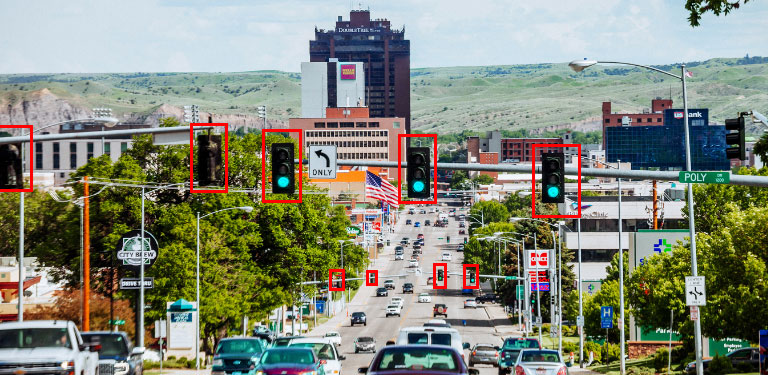
Region of Interest

Benefits of region of interest (ROI) boundaries for data labeling:
- Accurate object segmentation: ROI boundaries allow for more precise object segmentation compared to other annotation techniques, such as bounding boxes. This is especially useful for objects with irregular shapes or overlapping instances.
- Enhanced object recognition: ROI boundaries provide more detailed information about the object’s shape and contours, enabling machine learning models to better distinguish between similar objects and accurately recognize them.
- Improved data quality: ROI boundaries help reduce labeling errors and ensure consistent and accurate labeling across different images, which ultimately leads to improved data quality and better machine learning model performance.
Use cases for region of interest (ROI) boundaries in data labeling:
- Medical imaging: ROI boundaries are widely used in medical imaging to label anatomical structures, such as organs, tumors, or blood vessels. These labeled images are used to train machine learning models to accurately identify and classify different regions of interest, which is crucial for developing accurate diagnostic tools and treatment plans.
- Agriculture: ROI boundaries can be used to label crops in aerial imagery or satellite images. This information is used to monitor crop growth, identify potential issues, and make informed decisions about irrigation, fertilization, and other farming practices.
- Wildlife monitoring: ROI boundaries can be used to label animals in camera trap images, allowing researchers to track and monitor animal populations. This information is used to study animal behavior, habitat use, and population dynamics, and can inform conservation efforts and wildlife management strategies.
Facial Landmarks
Benefits of facial landmarks for data labeling:
- Precise facial analysis: Facial landmarks provide precise locations of specific facial features, such as the eyes, nose, and mouth. This enables machine learning models to accurately analyze facial expressions, emotions, and other characteristics, which is useful for a variety of applications, such as security, entertainment, and healthcare.
- Efficient data labeling: Facial landmarks provide an efficient way to label large datasets of facial images. This is because they can be automatically detected and annotated using machine learning algorithms, which significantly reduces the time and cost of manual labeling.
Robustness: Facial landmarks are relatively robust to variations in lighting, pose, and other environmental factors. This means that machine learning models trained on facial landmark data can perform well even under challenging conditions, making them suitable for real-world applications.
Use cases for facial landmarks in data labeling:
- Facial recognition: Facial landmarks are commonly used in facial recognition systems to identify and match individuals based on their unique facial features. The precise locations of facial landmarks enable accurate detection and matching, making them a crucial part of the facial recognition process.
- Virtual try-on: Facial landmarks can be used to create virtual try-on experiences, where users can see how different products, such as glasses or makeup, look on their face. The precise locations of facial landmarks enable accurate product placement and tracking, creating a realistic and engaging experience for users.
- Healthcare: Facial landmarks can be used to analyze facial expressions and detect signs of pain, stress, or other emotions. This information can be useful for healthcare professionals to assess patients’ emotional and physical states and provide appropriate care. Facial landmarks can also be used to detect facial asymmetry or abnormalities, which can be indicative of certain medical conditions or developmental disorders.

Category Classification
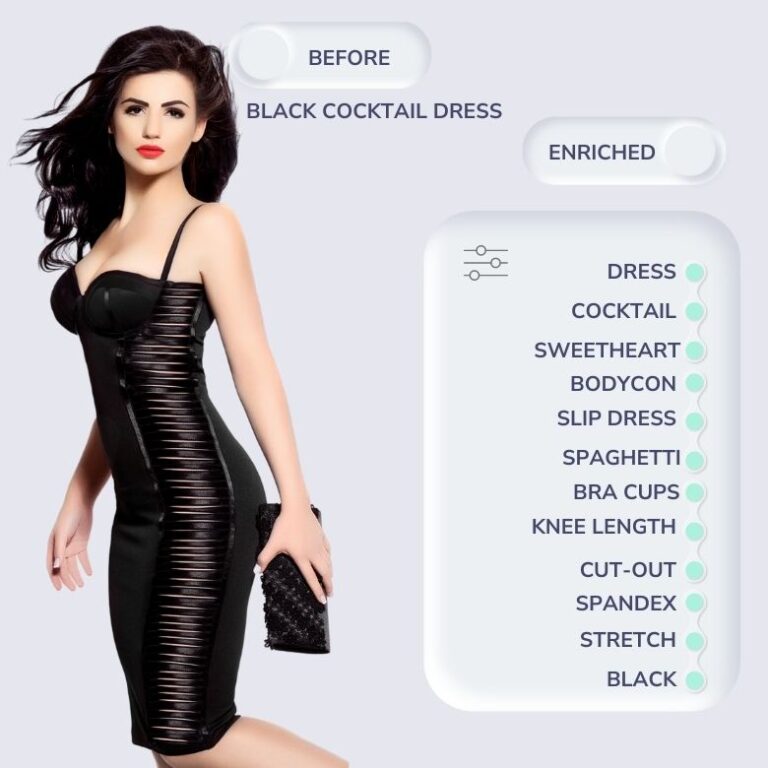
Benefits of category classification for data labeling:
- Enhanced user experience: Classifying images based on pre-defined categories improves the user experience by providing more relevant and personalized content. For example, by classifying images of clothing into different categories such as casual, formal, or sportswear, e-commerce sites can recommend products that match a user’s preferences and improve their overall shopping experience.
- Efficient data labeling: Classifying images based on pre-defined categories is an efficient way to label large datasets of images, as it requires less manual effort compared to more detailed annotation techniques, such as bounding boxes or segmentation masks. This means that data labeling can be done more quickly and at a lower cost.
- Improved accuracy: Classifying images based on pre-defined categories can improve the accuracy of machine learning models, as it provides more structured and meaningful data for training. By matching visual content with pre-defined categories, machine learning models can learn to recognize different objects, scenes, or events more accurately, leading to better performance in a variety of applications, such as image recognition, video analysis, or autonomous vehicles.
Use cases for category classification in data labeling:
- Content categorization: Websites and social media platforms can use image classification to automatically categorize user-generated content based on its visual content. For example, images of food can be categorized into different types of cuisine, such as Italian, Mexican, or Chinese, making it easier for users to search and discover relevant content.
- Image search: Image classification can be used to enhance image search capabilities by enabling users to search for images based on specific visual attributes, such as color, texture, or composition. By classifying images into different categories, such as landscapes, animals, or sports, image search engines can provide more accurate and relevant search results.
- Advertising: Image classification can be used to improve targeted advertising by matching ads with images that are relevant to the ad’s message. For example, a car manufacturer could target ads to users who are viewing images of sports cars or luxury vehicles. By classifying images into different categories, advertisers can improve the effectiveness of their campaigns and increase engagement with their target audience.
Transcribe Text
Benefits of transcribing text for data labeling:
- Improved Accuracy: Transcribing text in images can significantly improve the accuracy of data labeling. Machine learning algorithms rely on accurately labeled data to learn patterns and make predictions. By transcribing text in images, data labeling becomes more precise and consistent, resulting in better training for machine learning models.
- Increased Efficiency: Transcribing text in images can also increase the efficiency of data labeling. Human annotators can quickly identify and transcribe text within an image, reducing the time required for labeling. This can help speed up the data labeling process, allowing machine learning projects to progress more quickly.
- Enhanced Accessibility: Transcribing text in images can also make data labeling more accessible to a wider range of people. For example, people with visual impairments may struggle to label images that do not have transcribed text, but can more easily participate in labeling tasks when the text is transcribed. This can help create a more diverse and inclusive labeling community, which can lead to better outcomes in machine learning.
Use cases for transcribing text in data labeling:
- Object Recognition: Transcribing text in images can be used to improve object recognition in machine learning algorithms. By identifying and transcribing text within images, machine learning models can better recognize and categorize objects based on their context and meaning.
- Sentiment Analysis: Transcribing text in images can also be used to analyze sentiment in social media posts, customer feedback, and other text-heavy datasets. By transcribing text within images, machine learning models can better understand the context and sentiment of the text, leading to more accurate sentiment analysis results.
- Optical Character Recognition (OCR): Transcribing text in images can also be used to improve OCR algorithms. OCR is a technique used to extract text from images, but it is often difficult to accurately extract text from images with poor quality or low resolution. By transcribing text within images, OCR algorithms can be trained to better recognize and extract text, leading to more accurate and reliable results.
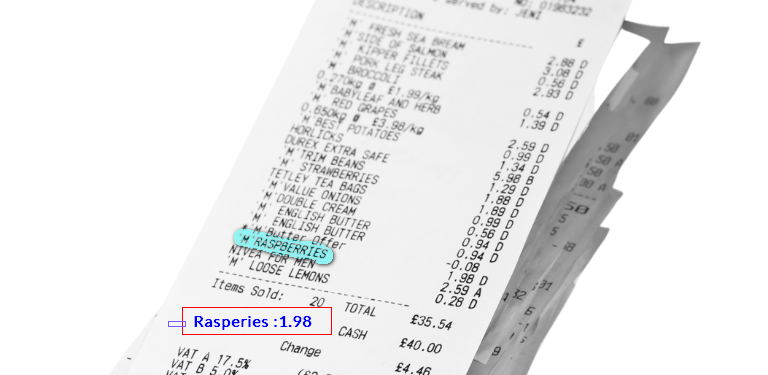
A/B Testing
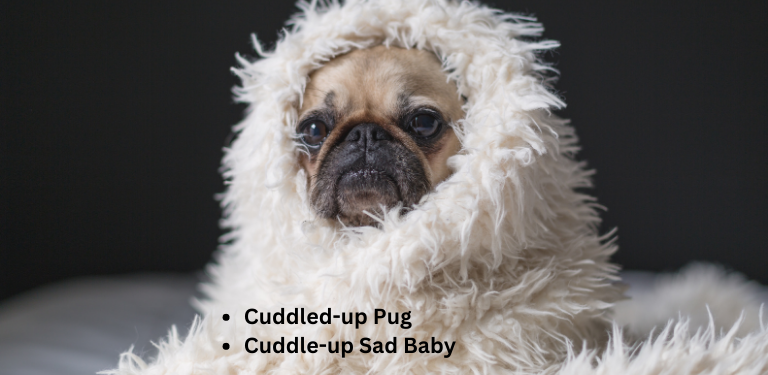
Benefits of A/B Testing for data labeling:
- Improved accuracy: A/B testing can help improve the accuracy of data labeling by comparing two different sets of labeled data and identifying which one is more accurate or reliable. This can help identify labeling errors or inconsistencies, leading to better quality data.
- Better decision-making: A/B testing can also help decision-makers choose the best labeling method or algorithm for a particular task. By comparing the results of two different labeling methods, decision-makers can determine which one is more effective and make informed decisions based on the results.
- Increased efficiency: A/B testing can also help increase the efficiency of data labeling by identifying which labeling method or algorithm is more efficient. This can help reduce the time and resources required for data labeling, leading to more efficient data processing and analysis.
Use cases for A/B Testing in data labeling:
- Comparing different annotation guidelines: A/B testing can be used to compare different annotation guidelines to determine which one produces more accurate or reliable results. This can help improve the quality of labeled data and lead to more accurate machine learning models.
- Testing different algorithms: A/B testing can also be used to test different algorithms for data labeling. By comparing the results of different algorithms, decision-makers can determine which one is more effective and choose the best one for a particular task.
- Evaluating human and machine labeling performance: A/B testing can be used to compare the performance of human annotators and machine learning algorithms for data labeling. By comparing the results of human and machine labeling, decision-makers can determine which approach is more accurate and efficient for a particular task.
Dataset Collection
Benefits of data collection for data labeling:
- Improved machine learning models: Image and video dataset collection can help improve the accuracy and reliability of machine learning models. By collecting diverse and high-quality datasets, machine learning models can be trained to recognize and categorize objects, actions, and scenes more accurately.
- Enhanced data-driven decision-making: Image and video dataset collection can also help decision-makers make more informed and data-driven decisions. By analyzing large datasets of images and videos, decision-makers can identify patterns and trends, and gain insights into customer behavior, market trends, and other important factors.
- Increased automation: Image and video dataset collection can also help increase automation in various industries. By collecting large datasets of labeled images and videos, businesses can train machine learning models to automate tasks such as quality control, defect detection, and inventory management. This can help increase efficiency and reduce costs.
Use cases for dataset collection in data labeling
- Object recognition: Image and video dataset collection can be used to train machine learning models to recognize and classify objects within images and videos. This can be useful in a variety of industries, such as retail, manufacturing, and healthcare, where accurate object recognition can help automate tasks and improve efficiency.
- Facial recognition: Image and video dataset collection can also be used to train machine learning models to recognize faces within images and videos. This can be useful in security and surveillance applications, as well as in marketing and advertising, where facial recognition can be used to personalize customer experiences.
- Scene recognition: Image and video dataset collection can also be used to train machine learning models to recognize and classify scenes within images and videos. This can be useful in industries such as entertainment, where scene recognition can be used to automatically tag and categorize video content, and in transportation, where scene recognition can be used to automate tasks such as self-driving cars.

Tell Us About Your Project
